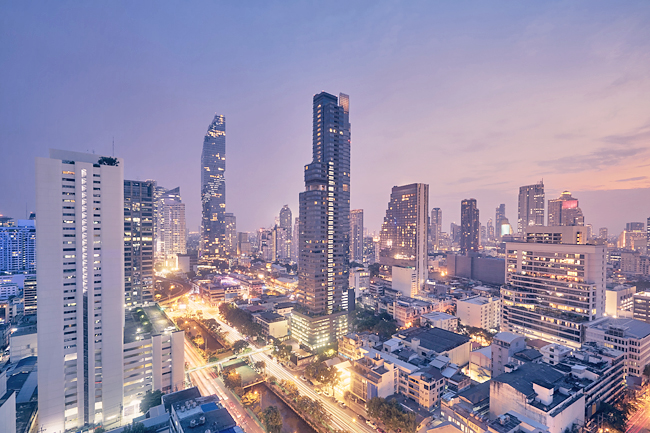Izah Azahari
For the ASEAN Chairmanship in 2023, Indonesia’s theme is ‘ASEAN as an Epicentrum of Growth’.
Thoughts and opinions on the theme were recently expressed by Secretary General of the International Economic Association (IEA) and Lead Advisor for Southeast Asia Region at the Economic Research Institute for ASEAN and East Asia (ERIA) Lili Yan Ing, along with ERIA Trade Specialist Yessi Vadila, in an article they co-wrote titled Can ASEAN be an Epicentrum of Growth?
The authors started off by looking at some important economic indicators that those who are optimistic about ASEAN’s potential as an epicentre of growth might have considered. This first includes an analyses of some of the major economic indicators that could make ASEAN a potential hub of growth, as viewed by optimistic observers.
ASEAN has displayed impressive economic progress and demographic statistics over the last 20 years with the region achieving an average economic growth rate of five per cent – one of the highest in the world – from 2000 to 2022.
In 2022, ASEAN’s population was 672 million, which accounts for around nine per cent of the total global population, and the region contributed 6.4 per cent to the worldwide gross domestic product (GDP). Excluding Cambodia, ASEAN’s labour productivity growth rate was 3.2 per cent from 2000 to 2022.

Notably, for the year 2022, approximately 68 per cent of the population of the six most significant economies in ASEAN – Indonesia, Malaysia, the Philippines, Thailand, Singapore, and Vietnam – are within the working age range of 15 to 64 years. All of these factors, combined with political stability, position ASEAN as one of the most appealing trade and investment partners in the world.
On their second point, the authors highlighted that ASEAN has demonstrated favourable trade and investment performance over the same timeframe. In 2022, ASEAN’s overall trade accounted for 7.7 per cent of the world’s total trade or 17.6 per cent of East Asia’s total trade.
During the same year, ASEAN’s total foreign direct investment (FDI) accounted for 26.7 per cent of total FDI in East Asia and 11.6 per cent of total FDI in the rest of the world.
Meanwhile, the authors’ third point highlights the impressive progress made by ASEAN in the digital realm, as it is projected that the global digital trade will reach USD10 trillion by 2030, with ASEAN contributing USD1 trillion or 10 per cent to this amount.
Citing a report by Ing and Markus (2023), the authors noted that around 80 per cent of Internet users in ASEAN were involved in online shopping in 2020. Digital advancements such as artificial intelligence (AI) have the potential to transform and revolutionise different industries, including healthcare, education, finance, energy and transportation.
The article continues on with the authors outlining three major challenges that the region currently faces.
The first of these challenges is the rising geopolitical tensions, which have expanded to include technology and security concerns. The development has complicated the global geopolitical landscape and placed ASEAN in a difficult position, as the region is often pressured to choose a side in the ongoing dispute.
The second challenge is that ASEAN centrality is being challenged by an increasing number of developed country-led economic frameworks and initiatives. One example is the United States led Indo-Pacific Economic Framework, which is not a trade agreement and is only open to relatively developed and upper-middle-income ASEAN member countries, leaving out Cambodia, Laos and Myanmar. This caused divisions within ASEAN and may lead to greater economic and political disparities and potentially create divergence in regional policies.
Finally, ASEAN is struggling with inconsistencies in its domestic policies, with policies that favour certain sectors through heavy support and subsidies, as well as non-tariff barriers, local content requirements, and complicated and costly cross-border customs clearance.
These policies may lead to uneven economic development within the region and potentially hinder ASEAN’s ability to fully realise its potential as a unified economic bloc.
“To ensure its success on the international front, ASEAN should prioritise maintaining its centrality and solidarity as a united entity instead of hastily joining numerous developed country-led trade agreements or economic frameworks,” stated the authors.
“It is crucial for ASEAN to carefully consider what matters for the region by emphasising the effectiveness of the agreements and cooperation mechanisms in promoting ASEAN’s development and improving the well-being of its people, rather than the number of free trade agreements, comprehensive economic partnership agreements, or trade frameworks of which ASEAN is (or a few ASEAN member countries are) a part.”
To ensure consistency with its regional and international commitments, the authors noted that ASEAN needs to manage its openness in trade and investment. It should promote its role as a middle power that supports peace and has a young demographic with a stable macroeconomic environment and promising growth.
ASEAN should prioritise policies that benefit its people and avoid populism policies like subsidies to specific industries or state-owned enterprises. Instead, it should invest in infrastructure, institution building, and education to develop its human capital.
“But remember, only true leaders can leave a legacy. In the end, the key to development in the age of AI and digital technology is ‘human capital’.
If ASEAN fails to take the bitter pill of massive development of infrastructure, education, and digital connectivity, and prepare for the robot and AI era, ASEAN as an epicentrum of growth may just be wishful thinking, if not a myth,” the authors concluded.






